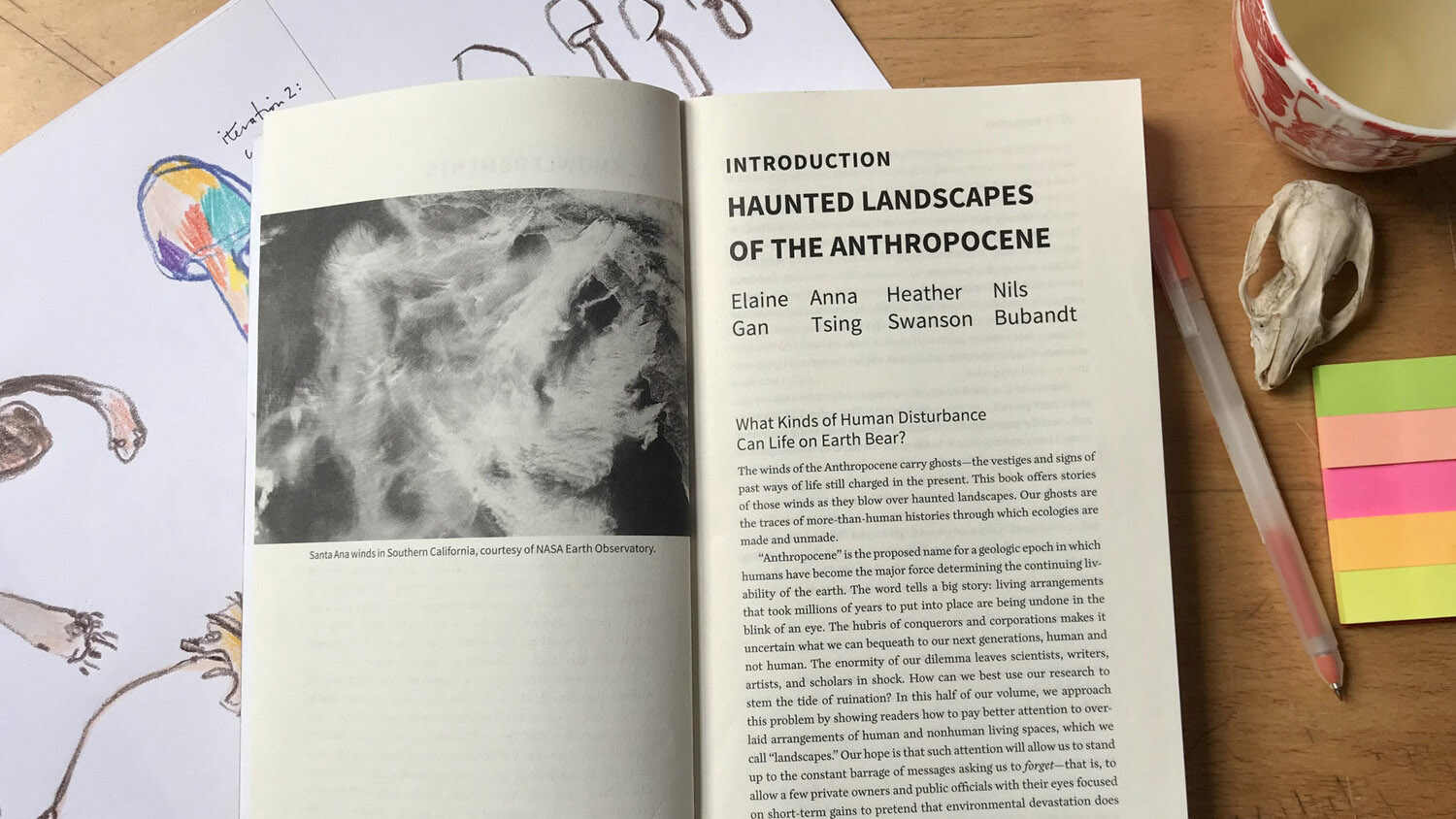Anna Tsing, Heather Swanson, Elaine Gan, Nils Bubandt (editors). University of Minnesota Press, 2017.
The book is organised into two parts: Ghosts of the Anthropocene and Monsters of the Anthropocene. When one part ends, you must flip the book over to start reading the other. At the centre, where these parts meet, a double page spread explains the editorial intention, which appeals to us primarily for the 'playful invitation' for collaborative methods between disciplinary silos:
“On a damaged planet, monsters and ghosts are figures hiding in plain sight. They point us to forms of noticing that crosscut forms of knowledge, official and vernacular, science and storytelling. They show us co-species practices of living. If monsters are excess, ghosts are absence and invisibility. Monsters are entangled—and contaminated—bodies. Ghosts suffuse landscapes with many kinds of time. Following ghosts and following monsters are different ways to know the terrors of the Anthropocene. Ours is a playful invitation for collaborative methods, a call for new creativities for worlds that are possible and an urgent cry against the irreversibility of damage and the extinction of things that are not able to survive.”
[...]
“Arts of living are necessary because of threat to our survival. The livability of the earth is at stake—perhaps not for extremophile bacteria but for the many forms of life that humans and our companion species have learned to love. Mounting crises from chemical contamination, land grabs, and biodiversity loss are prompting interdisciplinary dialogues and urgent calls to action. The sheer magnitude of disruption has pushed scientists, artists, and humanists to reconsider relationships between nature and culture, subjects and objects of knowledge, heroes and ghosts of progress. A major challenge is how to think geological, biological, chemical, and cultural activity together, as a network of interactions with shared histories and unstable futures. There is something mythlike about this task: we consider anew the living and the dead; the ability to speak with invisible and cosmic beings; and the possibility of the end of the world.”
In the studio, our projects are often collaborations with researchers from beyond our field – we work alongside linguists, environmental humanists, natural scientists – because we believe our duty as full time scholars is to connect not just to the design discipline and industry, but to the broader communities we are necessarily entangled within, both human and nonhuman. This anthology is an anchor for us – an example of the type of interdisciplinary scholarship we aim to pursue.

